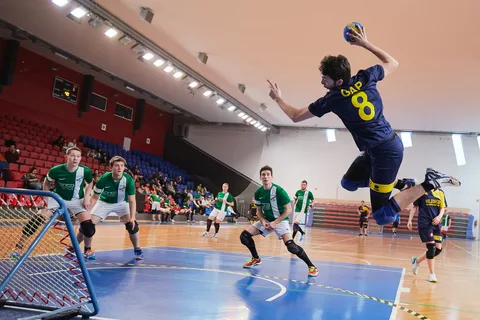Discovering Tchoukball: A Unique Fusion of Sportsmanship and Strategy

In the realm of lesser-known sports that blend athleticism with tactical prowess, Tchoukball stands out as a fascinating and engaging game. Originating in the 1970s from the innovative mind of Swiss biologist Dr. Hermann Brandt, Tchoukball was conceptualized not just as a sport, but as a means to encourage teamwork, skill development, and strategic thinking among players of all ages and abilities.
Origins and Evolution
Tchoukball was born out of a desire to create a sport that minimized physical contact and injuries while maximizing the emphasis on agility, coordination, and strategic planning. Dr. Brandt’s vision led to the development of a game that could be played indoors or outdoors, making it adaptable to various environments and accessible to people worldwide.
The name "Tchoukball" itself is derived from the sound the ball makes when it hits the frame—a rebounding net structure that defines the game’s unique mechanics. Teams compete to score points by throwing a ball at a frame and ensuring it rebounds beyond the reach of their opponents, preventing them from catching it. This dynamic creates a fast-paced, high-energy environment where offensive and defensive strategies are constantly evolving.
Rules and Gameplay
Central to Tchoukball’s gameplay is the emphasis on non-contact and fair play. A team scores points by successfully throwing the ball at the frame (often referred to as the "tchouk"), with the aim of preventing the opposing team from catching it after it rebounds. Catching the ball after a rebound or intercepting it in mid-air forces rapid changes in strategy and positioning.
Each team comprises seven players, divided into attackers and defenders, with positions often fluid depending on the phase of play. The quick transitions from offense to defense and vice versa demand strategic thinking, communication, and precise execution from every player on the court.
The Spirit of Tchoukball
Beyond its rules and gameplay mechanics, Tchoukball promotes sportsmanship and inclusivity. Its design encourages players to focus on skill development rather than physical confrontation, fostering an environment where fair play and mutual respect are paramount. This ethos has contributed to Tchoukball’s popularity in schools, recreational leagues, and competitive arenas worldwide, attracting players of all ages and backgrounds.
Global Impact and Community
Since its inception, Tchoukball has grown into an international sport, with federations and associations promoting its development across continents. Tournaments and championships showcase the sport’s competitive edge while reinforcing its core values of teamwork, strategy, and sportsmanship. The accessibility of Tchoukball—requiring minimal equipment and adaptable to various spaces—has further fueled its expansion into diverse communities globally.
Conclusion
In essence, Tchoukball represents more than just a game—it embodies a philosophy of inclusive athleticism and strategic thinking. Whether played for leisure or in fierce competition, Tchoukball continues to captivate players and spectators alike with its dynamic gameplay and emphasis on teamwork and skill. As interest in alternative sports grows, Tchoukball stands as a shining example of innovation in athletics—a testament to the enduring appeal of games that challenge both body and mind.
As you delve into the world of Tchoukball, you discover not only a sport but a community united by a passion for fair play, creativity, and the thrill of the game.
- Arts
- Business
- Computers
- Jeux
- Health
- Domicile
- Kids and Teens
- Argent
- News
- Recreation
- Reference
- Regional
- Science
- Shopping
- Society
- Sports
- Бизнес
- Деньги
- Дом
- Досуг
- Здоровье
- Игры
- Искусство
- Источники информации
- Компьютеры
- Наука
- Новости и СМИ
- Общество
- Покупки
- Спорт
- Страны и регионы
- World


